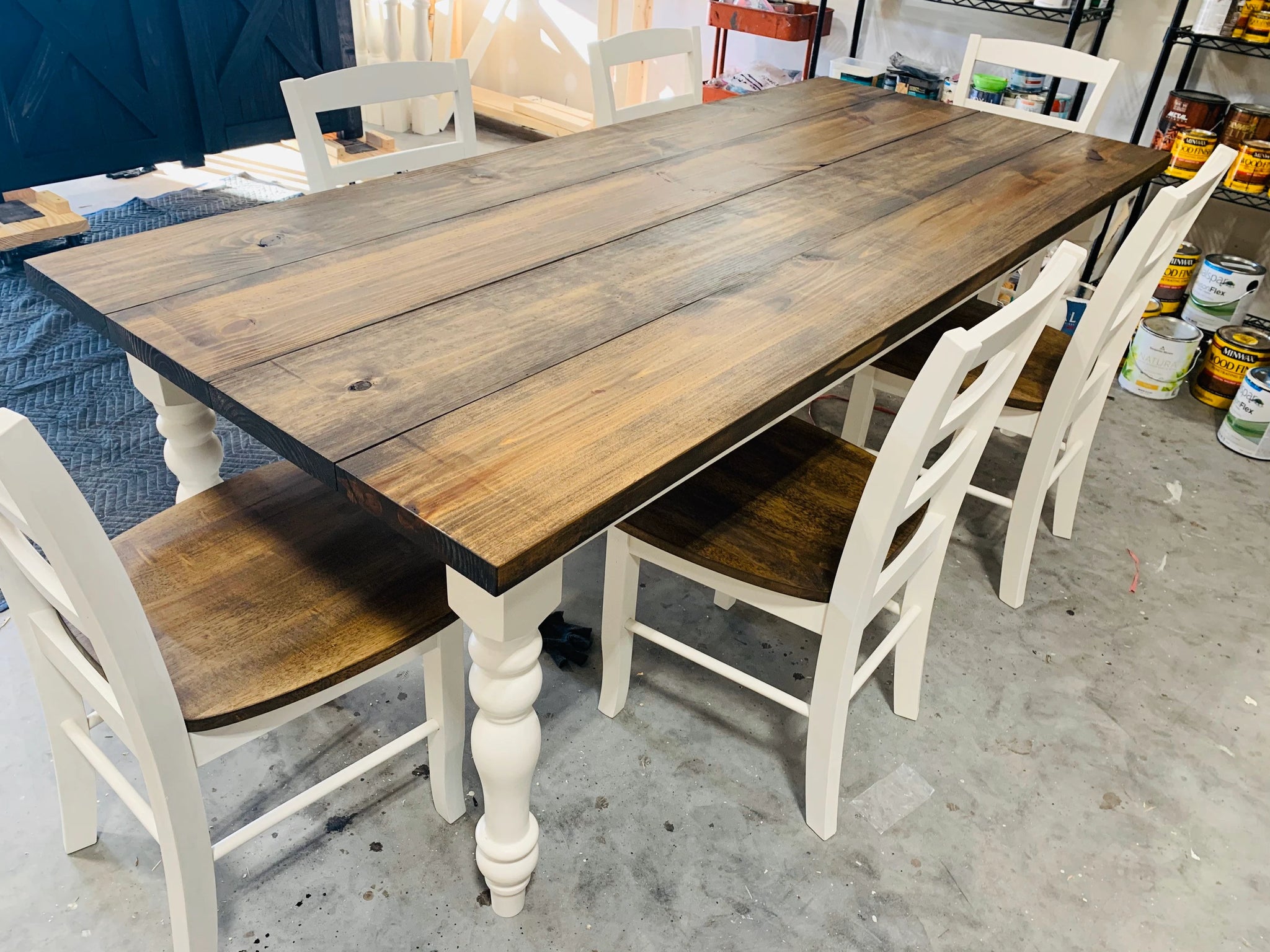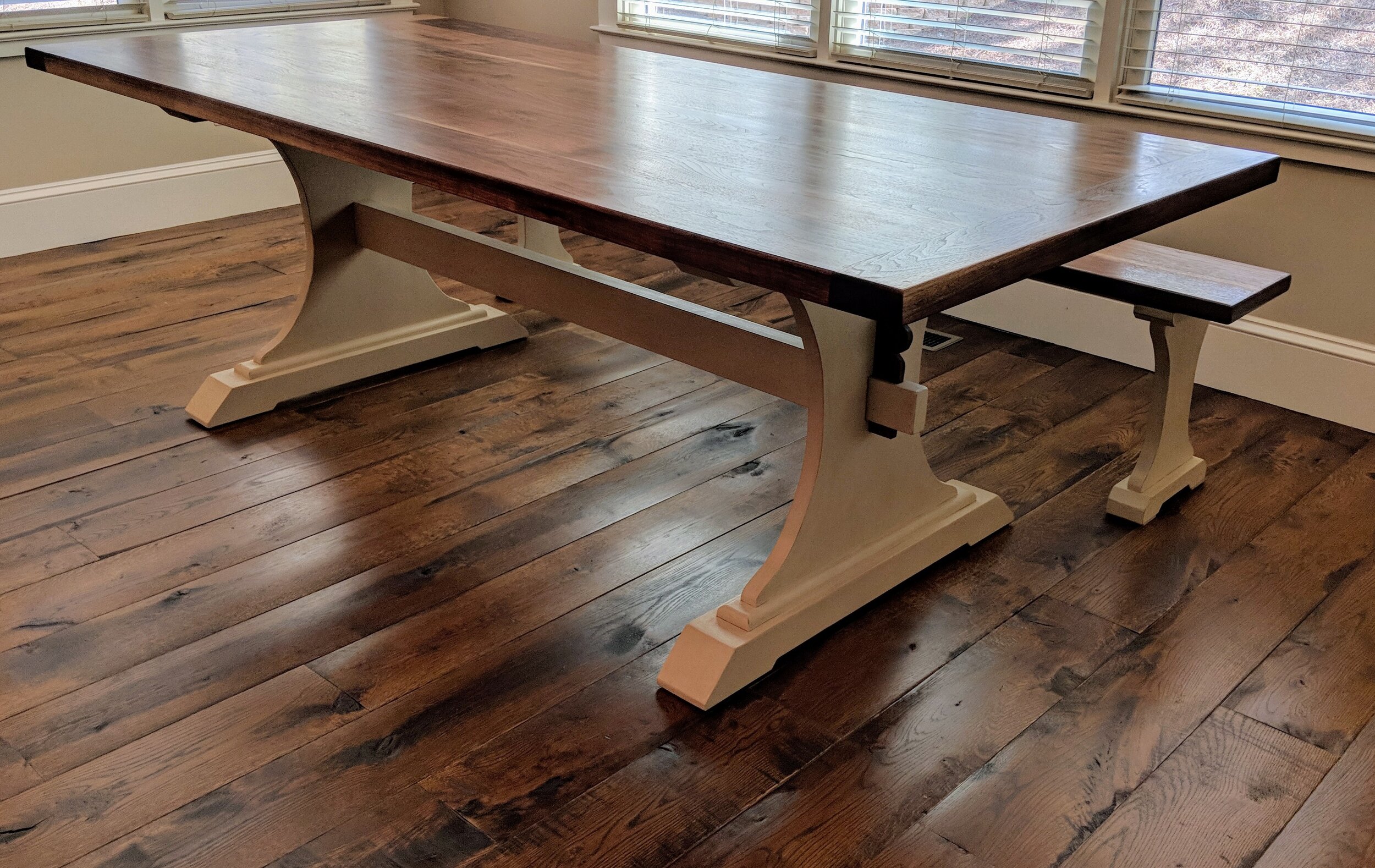Durable and Fashionable Selections for Durable Dining Table Legs Wood Solutions
Durable and Fashionable Selections for Durable Dining Table Legs Wood Solutions
Blog Article
Trick Elements to Keep in Mind for Table Legs Timber Choices
When picking wood for dining table legs, several vital elements warrant careful consideration to make sure both functionality and visual allure. The choice of timber kind, characterized by its toughness and unique grain patterns, plays an essential function in the general layout and longevity of the piece. Additionally, one need to contemplate maintenance needs and the ecological ramifications of sourcing materials. As these components intertwine, they significantly influence the final end result of your table. Comprehending the subtleties of each variable can be complicated, leading to crucial decisions that warrant more exploration.
Timber Types and Characteristics
When choosing timber for dining table legs, it is necessary to recognize the unique qualities of various timber types. Various timbers use distinct benefits and negative aspects, affecting both the resilience and visual allure of the ended up product.
Hardwoods, such as maple, cherry, and oak, are generally chosen for their toughness and resistance to wear. Oak, understood for its remarkable durability, additionally includes a prominent grain that can include character to the table. Maple provides a smooth surface and is less prone to warping, making it a trustworthy option for useful furnishings. Cherry timber, with its abundant color that deepens over time, supplies an elegant look yet may need even more maintenance to stop scratches.
On the other hand, softwoods like pine and fir are a lot more inexpensive and less complicated to collaborate with, yet they are less long lasting than woods. Pine is lightweight and features a warm, rustic appearance, making it a preferred selection for laid-back eating settings. It is much more prone to dents and scratches.
Comprehending these features will help in making a notified choice to make sure the legs of the table meet both visual and practical demands.
Grain Patterns and Aesthetics
Picking the ideal grain pattern can dramatically improve the aesthetic allure of table legs. The wood's grain is not just a visual characteristic; it conveys a special individuality and appeal to every piece. Various timber types show distinctive grain patterns, varying from the straight lines of maple to the elaborate swirls of oak and the striking number of walnut. These patterns can stimulate various designs, from rustic to modern-day, making it important to select a grain that aligns with the general layout of the dining room.
Additionally, the orientation and scale of the grain can influence the viewed size and style of the table. For circumstances, larger, a lot more noticable grains may lend a bold, remarkable effect, while finer, subtler grains can create a refined, downplayed look. Additionally, the finishing procedure can better enhance these patterns, stressing the all-natural appeal of the wood and highlighting rich tones.
Inevitably, the option of grain pattern need to balance with various other design aspects, such as the tabletop and surrounding furniture, ensuring a cohesive visual that elevates the eating experience. Thoughtful selection of wood grain not just adds to the table's elegance but likewise shows the owner's preference and style.
Longevity and Strength
The toughness and strength of eating table legs are paramount factors to consider for making sure long life and stability in any dining space. Selecting the appropriate timber is vital, as various types exhibit varying degrees of resilience.

Eventually, purchasing top quality wood and durable building and construction approaches will certainly yield a dining table that stands the examination of time, while offering a reliable structure for many dishes great site shared among family and friends. Focusing on durability and stamina makes certain that your dining table stays functional and cosmetically pleasing for several years to come.
Maintenance and Treatment
Proper maintenance and treatment are vital for maintaining the resilience and strength of eating table legs made from timber. Routine cleansing is crucial; making use of a soft, damp cloth guarantees that dirt and debris do not gather, which can bring about scratches and monotony. It is recommended to avoid harsh chemicals or abrasive materials that might harm the surface.
Additionally, using an ideal timber gloss or wax regularly can help maintain the shine and shield the timber from dampness and spills. Nevertheless, it is crucial to follow the producer's recommendations concerning the sort of product to make use of, as certain surfaces might respond detrimentally to specific chemicals.
Humidity and temperature level variations can likewise influence wood table legs, causing them to warp or crack. It's ideal to position the table far from why not check here straight sunshine and warmth sources. If the table legs have any type of scratches or dents, attending to these without delay can stop additional damages.
Finally, periodically checking the joints and screws for rigidity is essential to maintain architectural stability (Dining Table Legs Wood). By adhering to these maintenance practices, home owners can ensure their wood dining table legs continue to be practical and attractive for years ahead
Ecological Factors To Consider
When picking wood for eating table legs, it's important to take ecological factors to consider right into account. The sourcing and sustainability of timber are vital in minimizing ecological effect. Choosing wood from qualified sources, such as those backed by the Woodland Stewardship Council (FSC), guarantees that the wood is collected sensibly, advertising forest conservation and biodiversity.

In addition, regional sourcing of wood decreases transportation discharges, supporting local economies while lessening ecological influence. It is additionally recommended to be familiar with the wood's treatment and ending up processes, as particular chemicals can be harmful to both human wellness and the setting. By prioritizing lasting timber choices, customers can add to ecological conservation while appreciating the sturdiness and beauty of their eating table legs.
Final Thought
In final thought, choosing timber for eating table legs demands cautious consideration of different elements, including wood kinds, grain patterns, and longevity. Maintenance needs and ecological sustainability more impact wood options, emphasizing the relevance of sourcing from accredited or recovered products.
When picking timber for dining table legs, a number of vital variables call for mindful consideration to guarantee both performance and visual allure.Correct upkeep and care are important for maintaining the sturdiness and stamina of dining table legs made from click this timber.When choosing timber for eating table legs, it's crucial to take environmental factors to consider into account. By prioritizing sustainable timber options, consumers can add to ecological preservation while enjoying the durability and appeal of their dining table legs.
In verdict, picking wood for dining table legs necessitates careful factor to consider of numerous factors, including wood types, grain patterns, and longevity. Dining Table Legs Wood.
Report this page